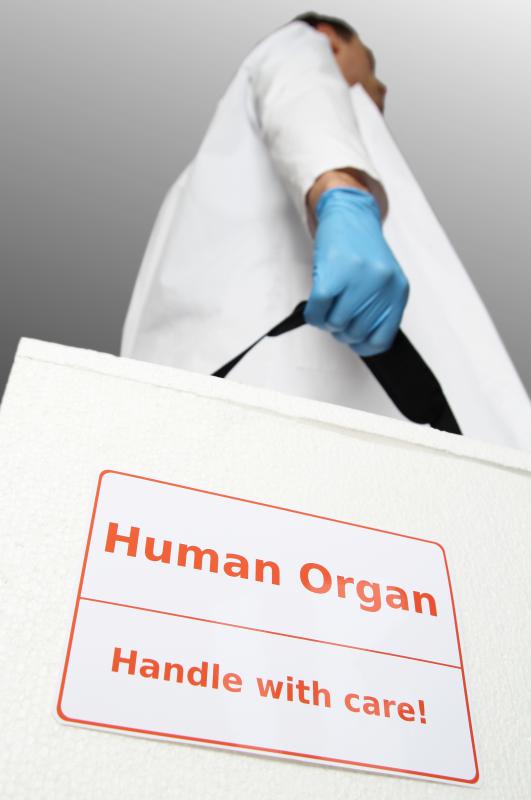At TheHealthBoard, we're committed to delivering accurate, trustworthy information. Our expert-authored content is rigorously fact-checked and sourced from credible authorities. Discover how we uphold the highest standards in providing you with reliable knowledge.
What are Tissue Engineering Scaffolds?
Tissue engineering scaffolds are structures made of artificial or natural substances that act as a shape on which cells can grow. The scaffold can be inert, and not interact with the cells growing on it, or it can actively help the cells to grow by releasing chemical signals. Such scaffolds are useful in helping to rebuild or replace lost human tissue.
The basis of tissue engineering is the laboratory creation of new cells and biological structures to replace lost or malfunctioning tissue and organs. To do this, tissue engineers need a shape — or scaffold — on which to grow the cells, because cells grown in the lab do not form shapes by themselves; instead, they spread out in a two-dimensional form. The scaffolds are designed to encourage cells to attach and grow in a specific predetermined shape.

Scaffolds can be made from a variety of substances. These include plastics, silk proteins, calcium phosphate ceramics, and even natural polymers such as collagen. In 2010, a Spanish research hospital was experimenting on human hearts taken from donors and stripped of all cells, leaving the collagen structure behind. The aim was to take cells from a patient who needs a heart transplant and allow the cells to grow on the collagen framework, creating a new heart the immune system does not attack as foreign.
A tissue engineering scaffold needs to be porous. Pores allow the cells to interconnect and adhere to one another. Ideally, the scaffold should also release chemicals that help to promote cell migration, cell adhesion and differentiation into specialized cells. Another benefit of some tissue engineering scaffolds is that they are biodegradable, so they break down once the cells have formed themselves into the desired shape.
A major problem with some tissue engineering scaffolds is that cells need oxygen and nutrients to grow. The cells can migrate into the pores of the scaffold to an extent. Once the cells begin to get too deep into the pores, however, they don't receive enough nutrients or oxygen, because the top layers of cells are blocking the movement of the nutrients and oxygen into the lower layers. One innovation, called a solid freeform (SFF) scaffold, gets around this problem, because it is designed with artificial blood vessels that carry these nutrients around the structure and remove waste products. SFF tissue engineering scaffolds were being experimented on in 2011 to perfect the artificial blood vessel system so large complex organs can be produced.
Scientists have already made skin by seeding patient skin cells onto a collagen structure. Skin is a two-dimensional structure, so the oxygen and nutrient diffusion issue has not held back development. This skin is used in treatment involving skin grafts.
AS FEATURED ON:
AS FEATURED ON:











Discuss this Article
Post your comments